Redevelopment in an economically deprived area in east Cardiff is leading to the demise of a market that has been a community asset for decades

Listen to a special extended podcast version of the article below
Every trading day, Ashley gets up at 6.30 am to set up his stall at Splott Market, which, since 1980, has occupied a site to the east of Cardiff city centre. Today, as it is every Thursday, Saturday and Sunday, the market is abuzz with an activity that makes you forget the cold, grey surroundings of this former timber yard.
For the last five years, Ashley’s clothing and textile business has been one of the bigger stalls in the market and continues to be a good earner for him.“I’m going to keep on coming here as long as it’s going,” he says. Like many of the stallholders at the market, Ashley is anxious about the future of the site, which is expected to be closed by summer and replaced by the development of the new Willows High School. The closure of the market, and others like it across the UK, represents the loss of both an important amenity as well as something less economically tangible – part of the community itself.
Traditional Retail Markets (TRM’s) like the one in Splott are often central to low-income areas. According to the Welsh government’s most recent Index of Multiple Deprivation data, which identifies the most impoverished regions in the nation, the area around Splott Market is within the 10% most deprived in Wales.
Research from Leeds University states that 89% of market users studied in the UK come from the less affluent socio-economic groups: C, D and E. The same study observes that just over half of the same users live in the 30% most deprived neighbourhoods. It’s not an understatement then to say that weekly markets – where they remain – are key parts of working-class neighbourhoods.
The heart of the community
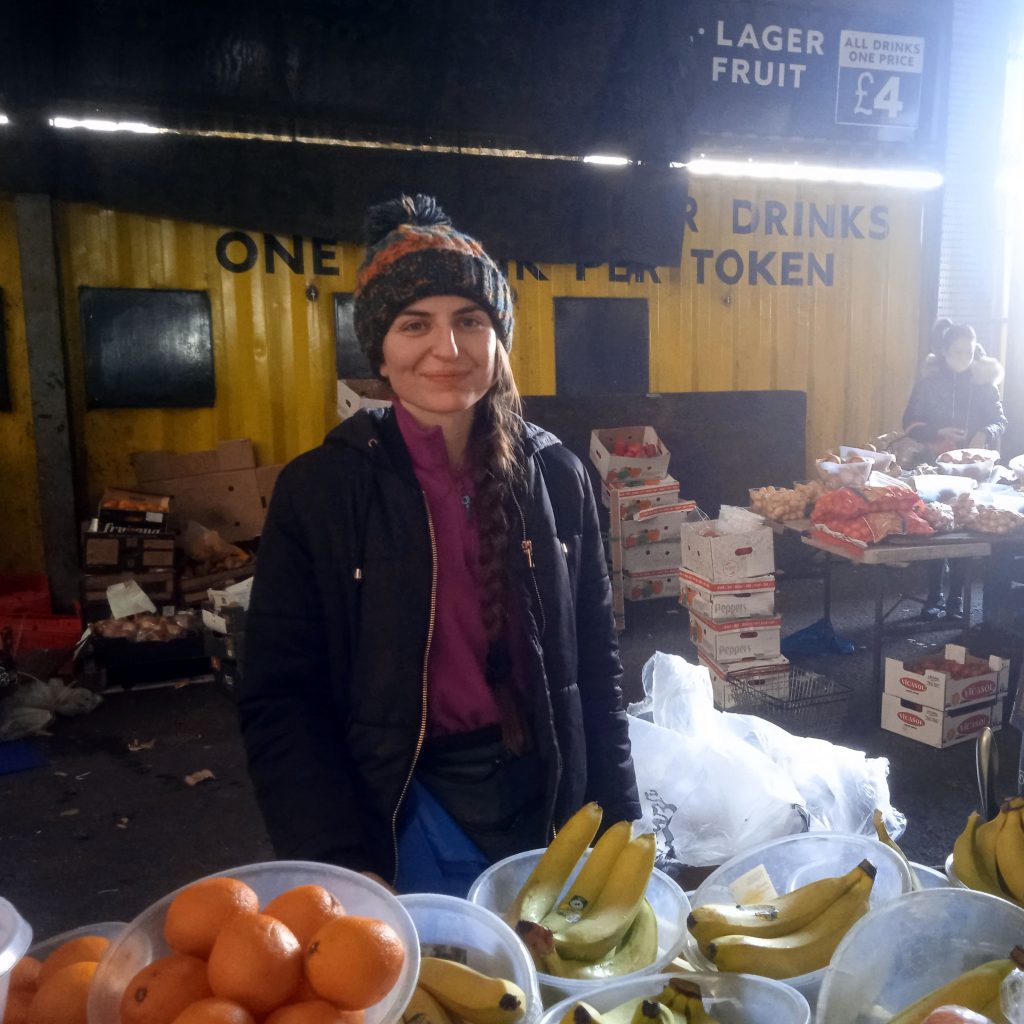
One of the researchers from the Leeds studies, Sara Gonzales, believes that markets are undervalued and under-recognised in the UK. Sara points out the social and cultural benefits of TRM’s: “People use markets in very social ways. People visit with friends and family. We also find that people are more likely to speak to people they don’t know. People feel less lonely when they visit. They feel like they belong – like these places are community hubs,” she says.
Walking around the market on a busy day and talking to the other customers and stallholders, it’s easy to see the truth in Sara’s observations about how sociable these spaces are. According to the director of the market, Mike Jones – who, at 76, is polite but reserved and a bit hard of hearing – the market attracts “Every sort, every race – for a lot of people, it’s their main shopping area,” he says, away from the noise in his on-site office.
Some of the sights of Splott Market and the surrounding area

Ponies owned by Irish Travellers are often seen grazing near the site of Splott Market, to the east of Cardiff city centre 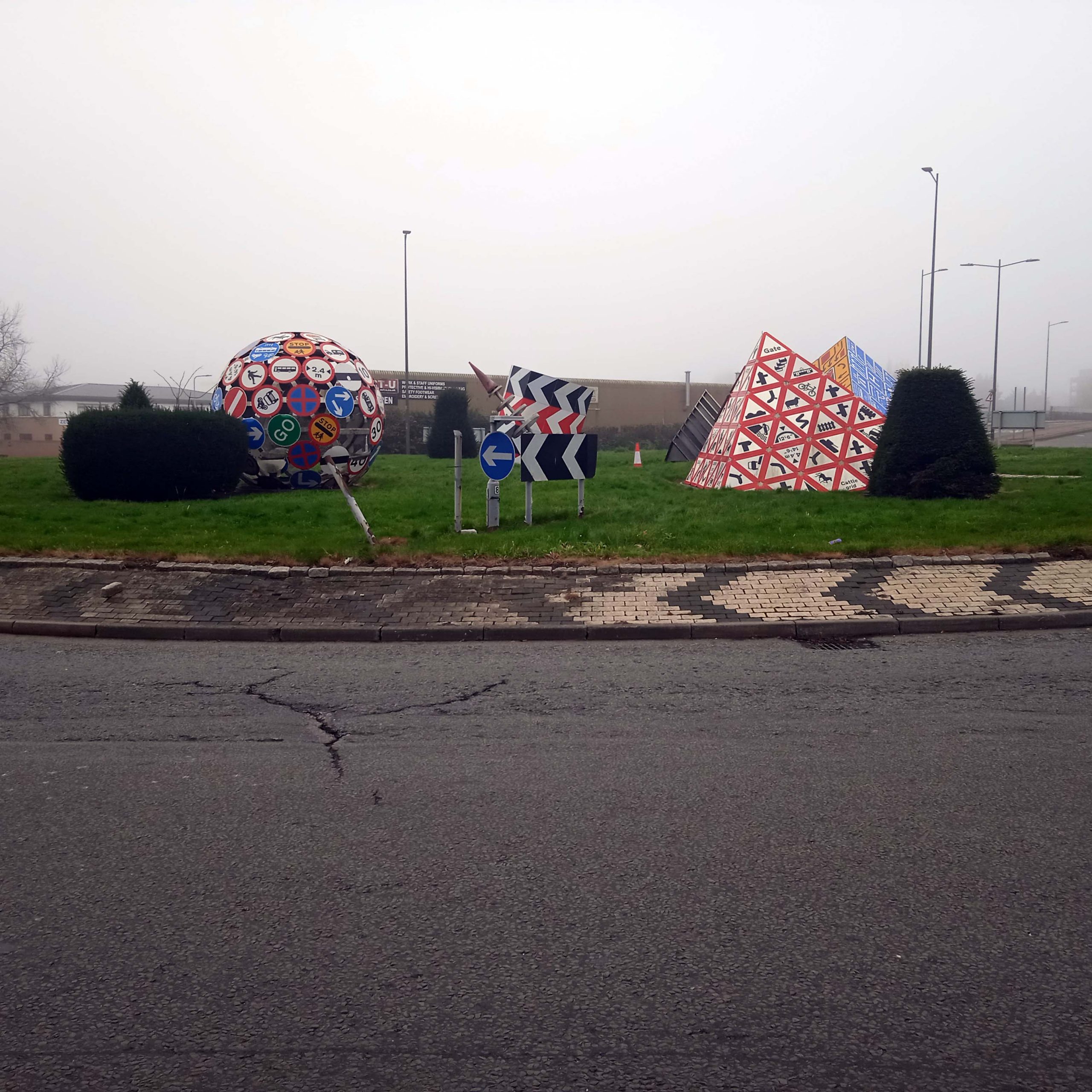
Splott Market is near the so-called “Magic Roundabout,” a site notorious locally for drugs and prostitution. Markets bring a sense of community to deprived neighbourhoods like Splott 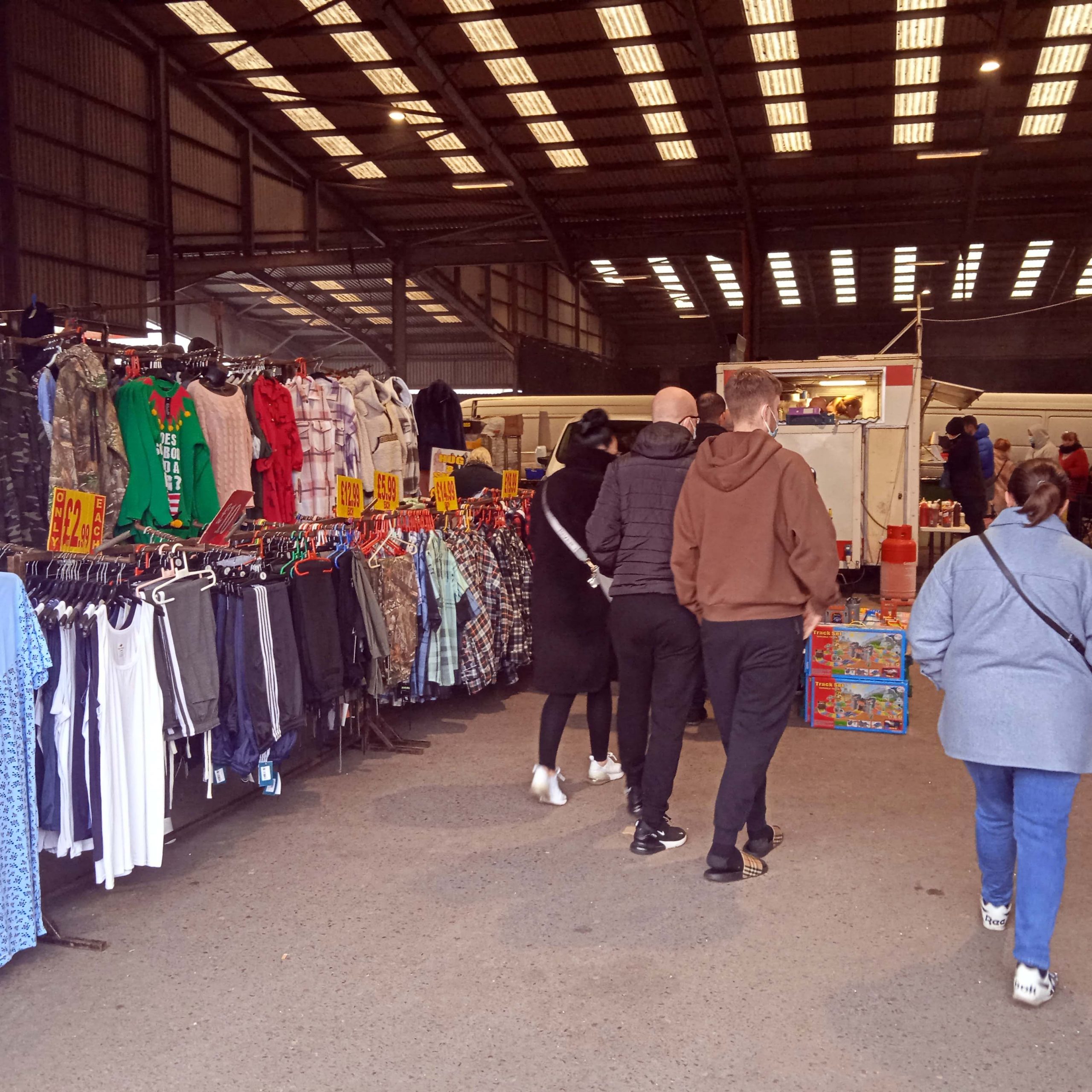
Splott Market has plenty of stalls catering for essentials like clothing 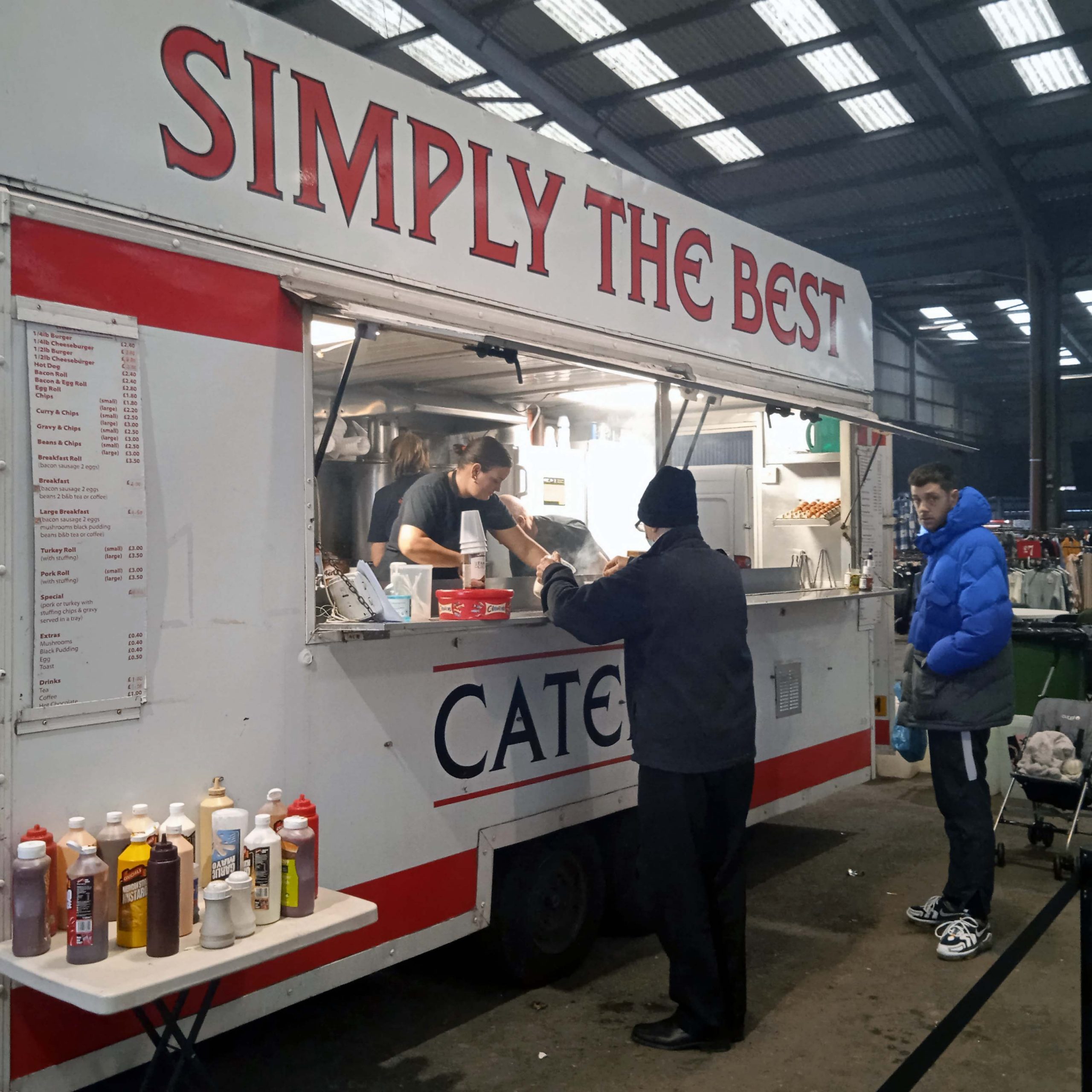
Customers at the market often stop to grab a snack, adding to the social aspect of the experience 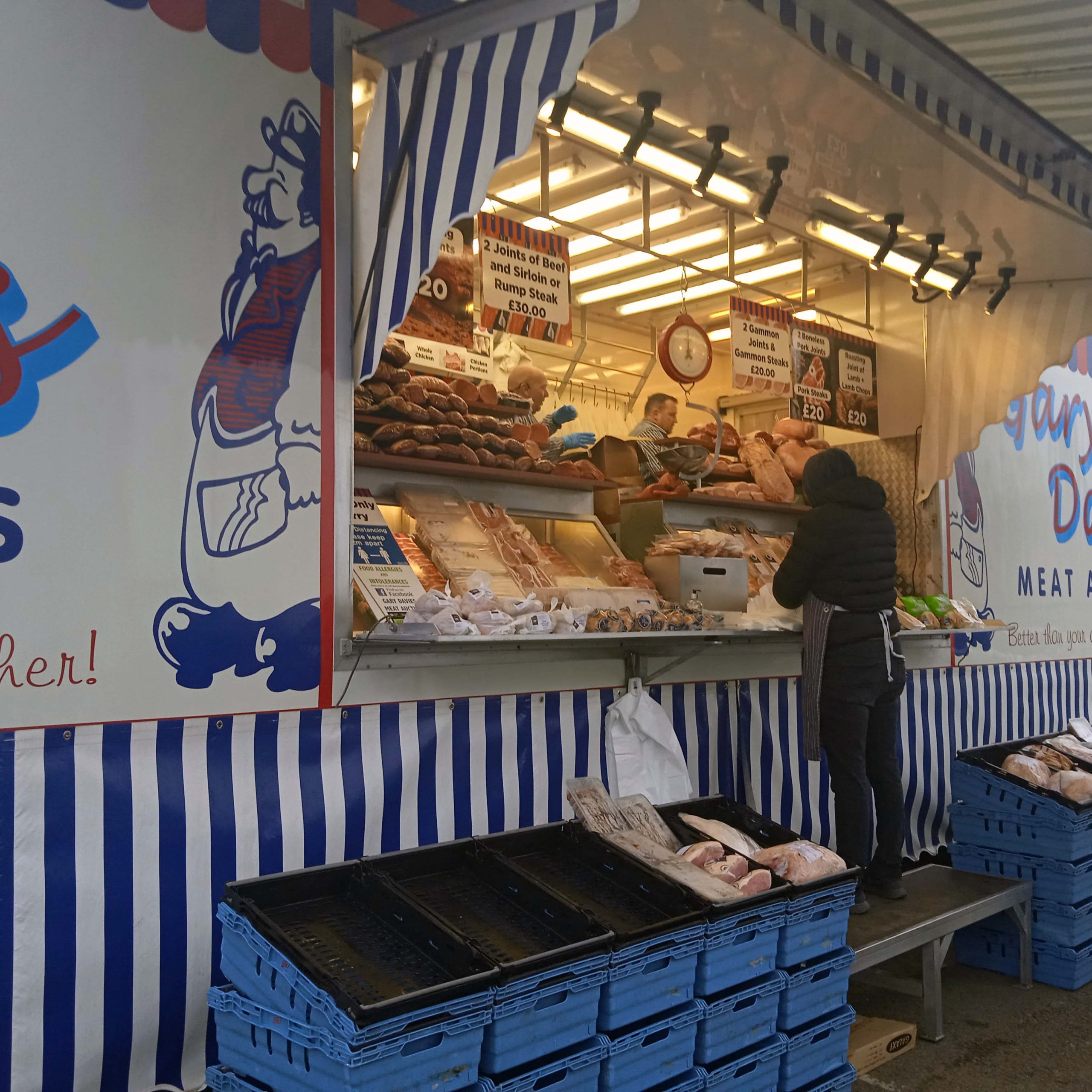
Gary Davies’ meat auction van has been trading at the Splott Market Site for two decades now 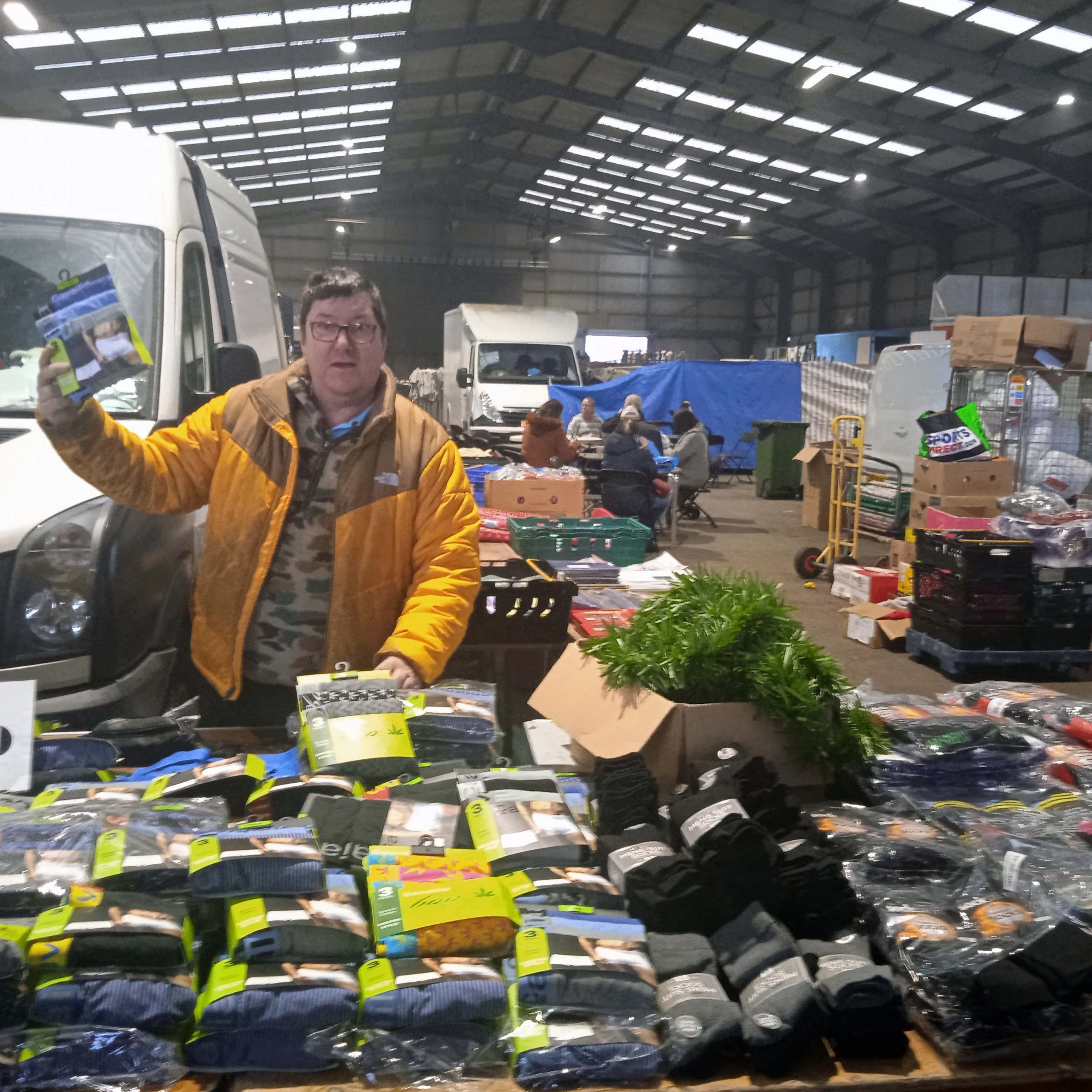
Market trader Simon Gloss is keen to show off his stock 
“The demise of the traditional market in this country is a failure upon the government. Neoliberal economics has come in with the likes of supermarkets and wiped away 2000 years of history” – Mike James, 48, Cardiff, Trader
Today is the weekend following “Black Friday,” one of the year’s busiest periods. It’s difficult to imagine the area on days like this without the throngs of people chatting as they browse the stalls or stop for a burger or a breakfast roll at one of several food vans and stalls.
The loss of the market also represents a loss of livelihood for many. There’s been some understandable discontentment from the stallholders about how the deal was done with the council for the site – without consultation from them or any suggestions for an alternative location. When I ask Mike about this, he directs me to his brother Clive, who led negotiations with the council. It wasn’t possible to get him to comment for this piece.
An uncertain future
“I was told they got 13 Million for it,” Says Tom, one of the Market stallholders. Tom, a Cardiffian Father Christmas-lookalike in his 70’s, wearing a Russian army surplus hat against the howling wind, is keen to share his objections with how it’s all been dealt with, but only after it’s less busy.
Apparently, the stallholders were wary of protesting the move for fear of having their pitches taken away: “The thing is, if anyone stands together, the attitude is ‘if you don’t like it, get off.’ and that’s the way it’s always been,” Tom says. A spokesperson for the council, Ian Lloyd-Davies, states that the agreed price of the land is “not public information.” The Joneses are cagey about the amount they got it for. Considering that they bought the site in the late ’70s when the land was cheap as a result of the de-industrialisation of the area, everyone here seems to agree that the sum – whatever it is – must represent a substantial windfall for the family.
The attitude is ‘If you don’t like it, get off’ and that’s the way it’s always been
It’s been suggested that another site for the market might be found, but so far, nothing suitable has been put forward. If the market is relocated to a site, perhaps in a different part of town, it will lose the quality that made it unique in the first place – the sense that it’s a focal point for local people.
For people in Splott, the market’s value is less easy to define than it is to the Joneses, beyond the loss of business for the stallholders, many of whom are still uncertain about where in Cardiff their next pitch is going to be. When asked why the market is important to the area, Tom says simply: “It’s like a small community. Everyone knows everyone – we’re all friends.”
